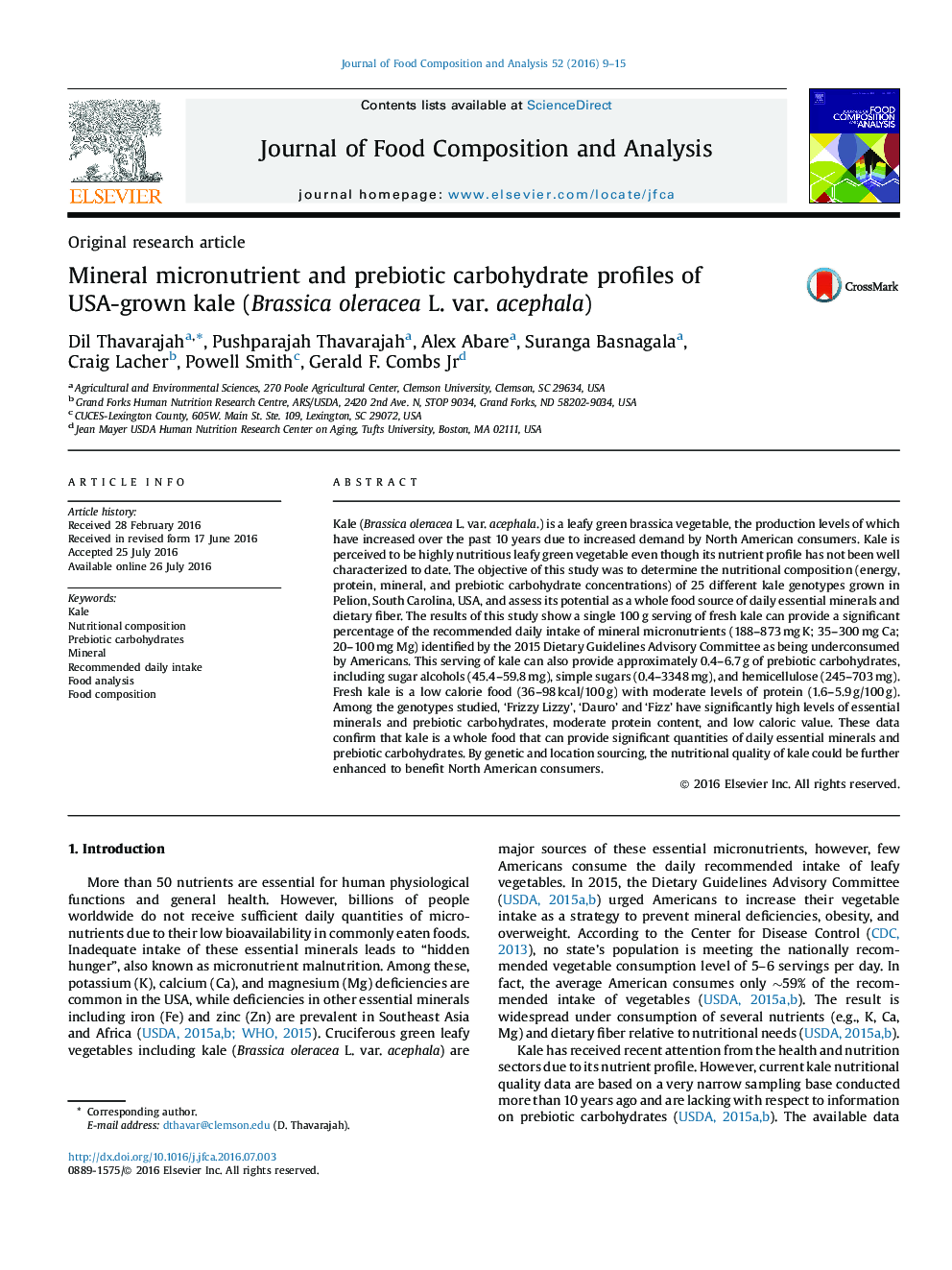| Article ID | Journal | Published Year | Pages | File Type |
|---|---|---|---|---|
| 1218022 | Journal of Food Composition and Analysis | 2016 | 7 Pages |
Abstract
Kale (Brassica oleracea L. var. acephala.) is a leafy green brassica vegetable, the production levels of which have increased over the past 10 years due to increased demand by North American consumers. Kale is perceived to be highly nutritious leafy green vegetable even though its nutrient profile has not been well characterized to date. The objective of this study was to determine the nutritional composition (energy, protein, mineral, and prebiotic carbohydrate concentrations) of 25 different kale genotypes grown in Pelion, South Carolina, USA, and assess its potential as a whole food source of daily essential minerals and dietary fiber. The results of this study show a single 100 g serving of fresh kale can provide a significant percentage of the recommended daily intake of mineral micronutrients (188-873 mg K; 35-300 mg Ca; 20-100 mg Mg) identified by the 2015 Dietary Guidelines Advisory Committee as being underconsumed by Americans. This serving of kale can also provide approximately 0.4-6.7 g of prebiotic carbohydrates, including sugar alcohols (45.4-59.8 mg), simple sugars (0.4-3348 mg), and hemicellulose (245-703 mg). Fresh kale is a low calorie food (36-98 kcal/100 g) with moderate levels of protein (1.6-5.9 g/100 g). Among the genotypes studied, 'Frizzy Lizzy', 'Dauro' and 'Fizz' have significantly high levels of essential minerals and prebiotic carbohydrates, moderate protein content, and low caloric value. These data confirm that kale is a whole food that can provide significant quantities of daily essential minerals and prebiotic carbohydrates. By genetic and location sourcing, the nutritional quality of kale could be further enhanced to benefit North American consumers.
Keywords
Related Topics
Physical Sciences and Engineering
Chemistry
Analytical Chemistry
Authors
Dil Thavarajah, Pushparajah Thavarajah, Alex Abare, Suranga Basnagala, Craig Lacher, Powell Smith, Gerald F. Jr,
